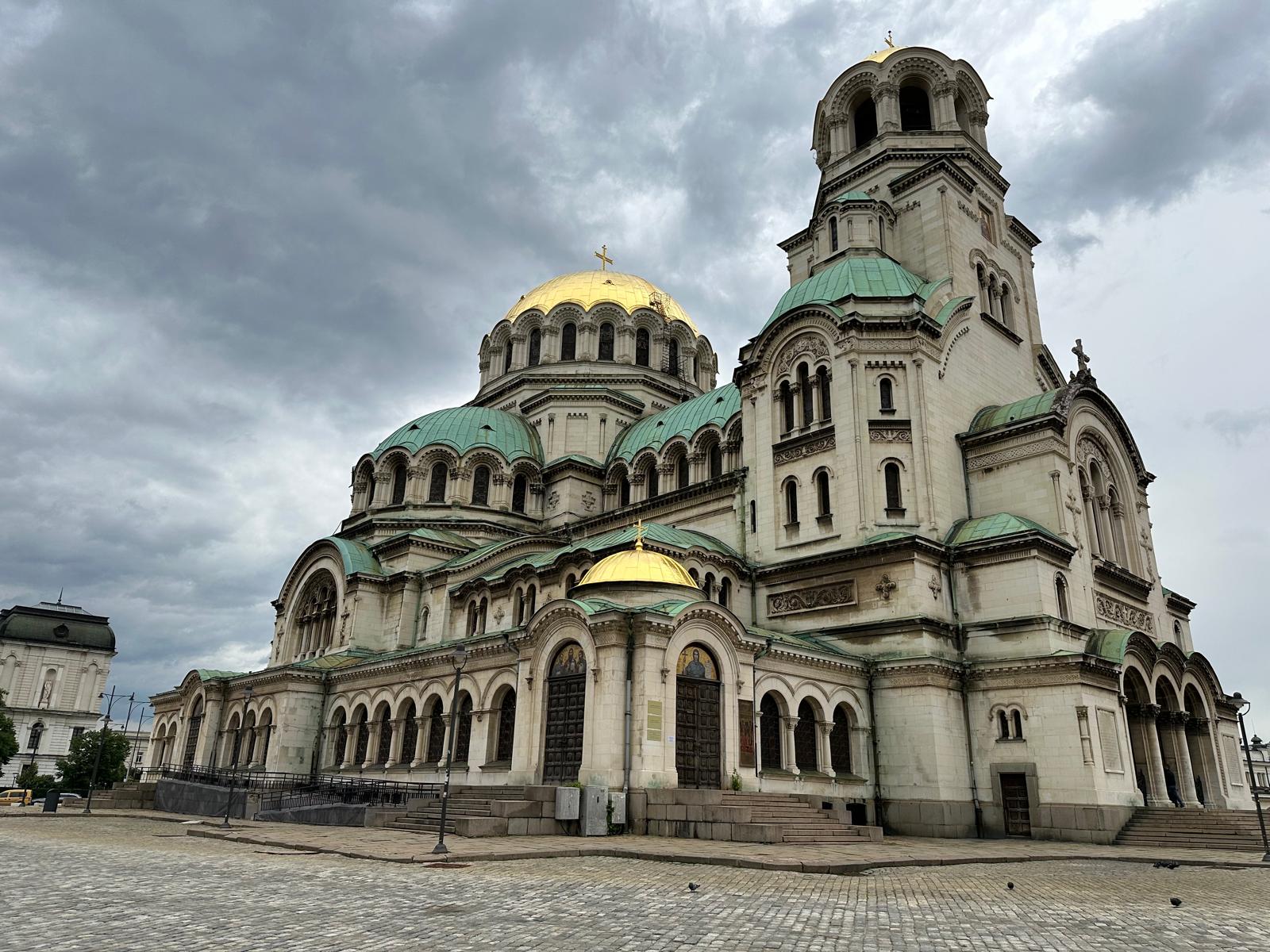Against the brooding sky, brushed with heavy strokes of gray and the promise of an oncoming storm, rises one of Eastern Europe’s most monumental testaments to Orthodox Christianity — the Alexander Nevsky Cathedral in Sofia, Bulgaria. Its presence is commanding, grandiose without boastfulness, as if time itself has conceded to its permanence. The camera captures it in full splendor, bathed in diffuse light that softens the stone while making the gold of its central dome gleam all the more defiantly.

The architecture is unapologetically Neo-Byzantine, layered like a ceremonial robe. Its limestone and marble body is segmented into rounded apses and porticos, with rhythmic arches lining its long flanks. The greenish patina of the copper domes contrasts elegantly with the beige stone, a visual dialogue between earth and sky. The largest dome, gold-plated and majestic, dominates the skyline, while the smaller domes and half-domes encircle it like a royal entourage. The bell tower, reaching up to nearly fifty meters, punctuates the composition, asserting a vertical thrust that echoes with solemnity.
Below, the square is paved in uneven cobblestones, a textured base that gives the entire image an Old World feel. There is a tangible absence of human presence — only the scattered silhouettes of pigeons haunt the plaza, amplifying the monumental scale and spiritual solitude of the cathedral. The windows, mostly narrow and dark, guard their secrets, while the carved stone reliefs above the doorways hint at narratives of saints and salvation. One of the main doors beneath a smaller golden dome is adorned with a Byzantine-style mosaic of Christ, his eyes gazing eternally ahead.
Despite the stormy weather and looming shadows, the cathedral radiates a stoic serenity, as if offering shelter not just from rain, but from the weight of centuries. Built in the early 20th century as a tribute to the Russian soldiers who died in the Russo-Turkish War of 1877–1878, which led to Bulgaria’s liberation from Ottoman rule, the cathedral is more than a house of worship. It is a historical palimpsest — spiritual sanctuary, architectural marvel, and national symbol all at once. Standing before it, one feels dwarfed not only by scale, but by legacy.
Leave a Reply